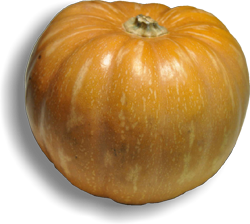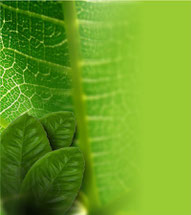Herbs - Medicinal Plants
Pumpkin. Properties, content. Pumpkin Benefits
what is Pumpkin?. Properties of the pumpkin. Health benefits of pumpkin. Uses of pumpkin, preparation as an anthelmintic. Pumpkin seed. Remedies.
Characteristics, content and health benefits of the Pumpkin

Scientific name: Cucurbita pepo L.
Family: Cucurbitaceae
Pumpkin is an annual plant with short cycle grown commonly in the tropics between March and June.
It is known from antiquity whose origins are lost in time.
The pumpkin is very useful as food and its seeds are highly valued for their health benefits as an anthelmintic and contain 50% of a fatty oil composed by oleic acid and linoleic acid.
It has a high content of carbohydrates, amino acids and vitamins B, C, D, E and K. It also contains minerals like calcium, potassium and phosphorus.
Other substances present in pumpkin are the glycoside (cucurbitin), albumin, lecithin, phytosterol and various resins.
Uses of pumpkin

Its preparation as an anthelmintic consist of mixing 100-200 g of peeled pumpkin seeds (without testa) with honey or syrup (up to 100 ml) and gradually taken over the course of 1 hour.
After 3 hours it should be taken some type of laxative to expel parasites. It has been very helpful in removing the Taenia Solium and Taenia Saginata.
Another use of the pumpkin is as antiinflammatory for cystitis, prostatitis, in particular for preventing or treating prostate cancer and also for insomnia.
The pulp either raw or cooked is used as emulsifier.
From the pumpkin seeds is extracted an oil very good for household and medicinal uses.
The seed has refreshing and soothing properties, is given as “seed milk” for nephritis and inflammation of the bladder and urethra.
A good remedy for burns is 30 g of pulp per liter of water and makes a porridge with the mix.
references
- Mashkovski MD. Manual de fitoterapia para médicos. Moscú: Ed. Meditsina, 1987.
- Roig JT. Plantas medicinales aromáticas o venenosas de Cuba. La Habana: Editorial Ciencia y Técnica, 1988:1125.
- Reynolds JEF (Editor). Martindale: The Extra Pharmacopoeia. London: The Pharmaceutical Press, 1989:1896.
- Pousset JL. Plantes medicinales africaines. Utilisation practique. París, Ed. Marqueting. 1989.
- Granda M, Acosta L, Fuentes V y Cabrera I. Plantas Medicinales II. La Habana: CIDA, 1990:27.
- Robineau L. Hacia una farmacopea caribeña. Sto. Domingo: Enda-Caribe/UNAH, 1991:475.
Other medicinal plants
what is Pumpkin?. Properties of the pumpkin. Health benefits of pumpkin. Uses of pumpkin, preparation as an anthelmintic. Pumpkin seed. Remedies.

 Pharmacognosy´s topics - Medicinal plants
Pharmacognosy´s topics - Medicinal plants












Write a comment